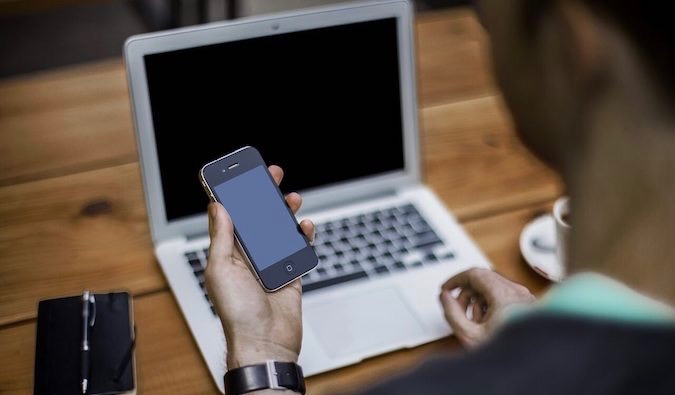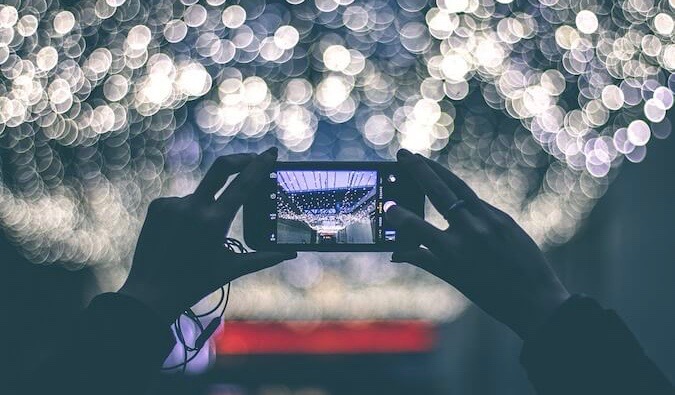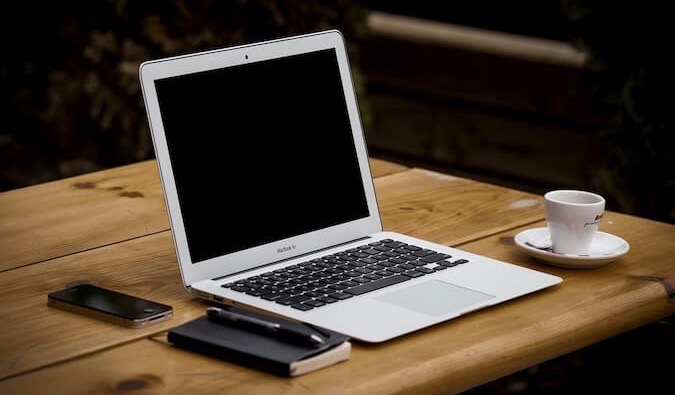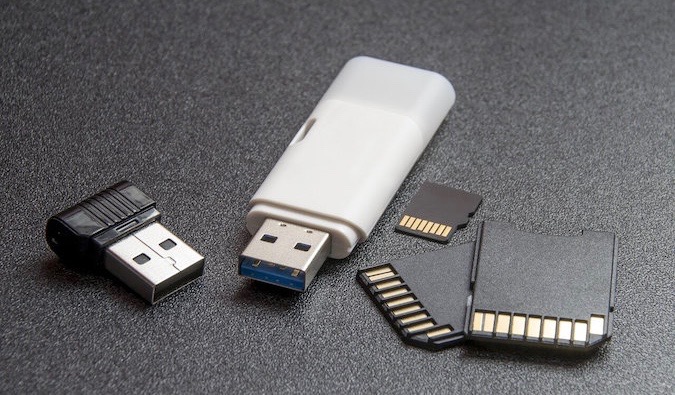Working out what to pack — and more importantly, what to leave behind — is a major hassle for travelers, whether you’re gone for a week or a year. Tech gear, in particular, is a problem: models and features change all the time; it’s fragile, expensive, and tempting to thieves

In this month’s travel tech column, Dave Dean, our resident travel tech guru, all around cool dude, and found of the tech website Too Many Adapters, rounds up the best travel gadgets for 2017.
Working out what to pack — and more importantly, what to leave behind — is a major hassle for travelers, whether you’re gone for a week or a year. Tech gear, in particular, is a problem: models and features change all the time; it’s fragile, expensive, and tempting to thieves; and it can easily distract from the experience you’re trying to have. Even worse, a lot of it just doesn’t work very well once you get out on the road.
I’ve been writing about technology for travelers since 2011, and have tested more useless gadgets than I care to remember. Occasionally, though, something stands out: a phone that’s particularly durable, a laptop that’s surprisingly good value, a little accessory that genuinely improves your trip.
Here, then, are my 2017 recommendations for quality tech gear that makes your trip simpler and easier, without destroying your bank balance or luggage allowance.
Smartphones

A smartphone is easily the single most useful piece of technology a traveler can buy. In fact, since it replaces everything from a flashlight to a camera, a guidebook to a music player and much more, many people can (and do) get away without packing any other gadgets.
You can spend under $250 for a good budget model, or close to $1000 for a top-of-the-range version. There are benefits to spending more, of course, but not everyone needs the extra features that come with the higher price tags. These are my top picks across the range:
- Budget – Motorola Moto G 5 Plus. Motorola has been making good, inexpensive smartphones for several years, and the Moto G 5 Plus continues the trend. For around $230 (less, if you get the model with Amazon ads), you’ll have a phone that does all the basics well. It’s also water resistant. The battery should last all but the longest travel days, and there’s a “TurboCharger” that gives six hours more use in just 15 minutes and you can even stick in a micro-SD card so you’ll never run out of storage space. It’s easily my top budget pick right now.
- Mid-Range – OnePlus 3T. OnePlus keeps turning out mid-priced phones with high-end specs, and the 3T is the best so far. For under $500, you’ll get a smartphone with more storage, RAM, and raw performance than devices costing far more. It has dual SIM slots, so you can easily switch between your home SIM and a money-saving local SIM card; all-day battery life; and a fast charger that takes it from 0 to 60% in half an hour.
- High-end – Apple iPhone 7 or Samsung Galaxy S8. Android owners with big bank accounts should pick up the Samsung Galaxy S8. It’s the sexiest smartphone on the market, with a curved “infinity” display that makes every other phone look old and boring. The S8 crams a larger screen into a smaller space than the competition, and it has plenty of storage and RAM plus a micro-SD slot for ensuring that you never run out of space. Along with its great performance, it is water and dust resistant and has one of the best cameras you’ll find on any phone. For Apple lovers, the iPhone 7 gets almost everything right, with exceptional performance and build quality, a fantastic camera, and of course, access to everything in the App Store.
Tablets and e-readers

Don’t want to do every tech task on your phone? While I’ve stopped recommending any of the smaller tablet computers — when your phone has a 5.5” display, there’s little point also carrying a 7” tablet — the larger models are a different story.
- Apple: iPad. The standard iPad is best for most travelers. It’s dropped in both weight and price recently, and you now get a useful, lightweight 10” tablet (Wi-Fi-only version), with enough storage, for bit over $300. It’s perfect for watching Netflix, browsing the email, and staying up to date on Facebook! (You can get one with a SIM card slot as well, but it’s a lot more expensive and only worth considering if you don’t have an unlocked smartphone and want to stay connected all the time.)
- Android: Asus Zenpad 3S 10. The Asus Zenpad 3S 10 gives you a faster, cheaper tablet, with great graphics and more storage space. It has a fast-charging option (especially useful for those huge tablet batteries) and a micro-SD slot to add even more storage when you run out. It’s a premium tablet, sleek and lightweight, and well worth the money.
- E-reader: Paperwhite. If you enjoy a good book, consider an e-reader as well. I’ve been using one of Amazon’s Kindles for years, and recently upgraded to the Paperwhite. With its non-glare screen, weeks of battery life, and built-in light that doesn’t strain your eyes or annoy others in dark rooms, it’s easy to recommend. Not carrying physical books saves weight and space in your bag, and in countries where English-language books are hard to find, being able to download a new one with a couple of taps is a godsend.
Laptops

With phones and tablets having more power and storage each year, there’s less need for most travelers to carry something else. If you’re planning to do more than light work from the road, though, there’s still no replacement for a good laptop.
- Windows: Asus Zenbook UX330UA. The best value for money by far is the Asus Zenbook UX330UA. The company has been making very good, lightweight, $700 laptops for a few years, and the latest model continues the tradition. It gets all the basics right — 8Gb of RAM, a 256Gb solid-state drive, excellent battery life — while having more than enough power, and weighing well under three pounds. It doesn’t make silly compromises like cutting out USB ports or SD card readers, and you can even hook it up to a TV in your Airbnb apartment to watch your favorite shows.
- Mac: MacBook Pro. The Air, which used to be the perfect travel laptop, hasn’t been updated in so long, it makes no sense to buy it. The 12” MacBook is also due for an update, and with a relatively slow processor and just a single USB-C port that’s also used for charging, you’re quite restricted in what you can do with it. If I were considering one of these, I’d likely choose to save a bunch of money, and just buy an iPad Pro and Bluetooth keyboard instead. That said the older version MacBook Pro has dropped in price and only weighs 3.5 pounds and comes with old fashioned USB and SD card slots. The new model, while sleek and light, is pretty expensive and doesn’t come with these features. I prefer non-Apple products but if you were looking for a powerful Apple computer, the older Macbook Pro is the best choice.
Accessories

There’s no need to fill your backpack with gadgets, but a few well-chosen accessories go a long way. Better Wi-Fi, easier charging, simple photo backup, and drowning out noisy kids (and noisier adults), improves any trip. Here are eight accessory recommendations to do exactly that:
- Multi-USB travel adapter – This is my single favorite travel accessory right now. It’s small and light, and it lets you charge up to four USB devices from a single power socket. It’s great in hostels and airports, comes with clip-on adapters that let you use it in 150 countries, and costs under twenty bucks.
- Travel power strip – If you’re also carrying devices like laptops and cameras that need charging from the wall, use one of these little power strips instead. With two North American sockets, plus three USB ports, you can power everything at once. Just remember to pack a universal travel adapter as well.
- Charging cord – I always pack a long USB cable for my phone, plus a small spare in case it breaks. The extra length is super-useful when the power socket is halfway up a wall… which it always seems to be.
- Noise-isolating earbuds – Screaming kids, snoring dorm mates, honking horns. I shut them all out with these noise-isolating earphones. Music and podcasts sound great, they drown out almost everything (and everyone), and there’s even a little carrying case to keep them protected and untangled. When I left them on a plane in Bangkok, I went straight out and bought the same model again.
- Rugged USB stick – Whether you’re backing up trip photos, storing a bunch of TV shows, or just sharing files with friends at the hostel, a USB stick always comes in handy. Go for this rugged version — it’ll stand up to a lot more abuse and costs about the same as more fragile models.
- Travel router and portable battery – Multipurpose gadgets are ideal for travelers, at least when they’re done well, and this HooToo travel router definitely is. It boosts Wi-Fi networks and lets you share them among all your devices, has a 10,000mAh battery to keep everything charged up, and lets you plug in a USB stick or portable hard drive so you can copy files from your phone or tablet.
- UE Roll 2 portable speaker – There are thousands of travel speakers out there, but most of them are terrible. If you like to share your songs with the hostel or around the campfire, do yourself a favor and grab the UE Roll 2. It’s slim and light and waterproof, with amazing sound for its size and up to nine hours of battery life. There’s nothing better out there for the money right now.
- GRAYL ultralight water purifier – I’ve used a bunch of water purifiers over the years, and the GRAYL is the one I’ve stuck with. It’s lightweight, super-simple to use, and gets rid of pretty much every nasty you can think of, plus it functions as a normal bottle in places where the water is safe to drink. My girlfriend used it every day on a two week trip in Mozambique, and never got sick. If you want safe water everywhere you go, while cutting down on plastic use, go for the GRAYL.
Once you’ve made your decision, protect anything fragile with a case (they’re a lot cheaper than buying replacements), and make sure anything you really care about is covered by your travel insurance. Test everything thoroughly before you leave home, so you know exactly how it works and can deal with any problems while you’ve still got time and a shipping address.
Dave runs Too Many Adapters, a site devoted to technology for travelers. A geek as long as he can remember, he worked in IT for fifteen years. Now based out of a backpack long term, Dave writes about travel and tech from anywhere with half-decent Internet and a great view. You can also find him talking about the life of a long-term traveller at What’s Dave Doing?
Comments
Post a Comment